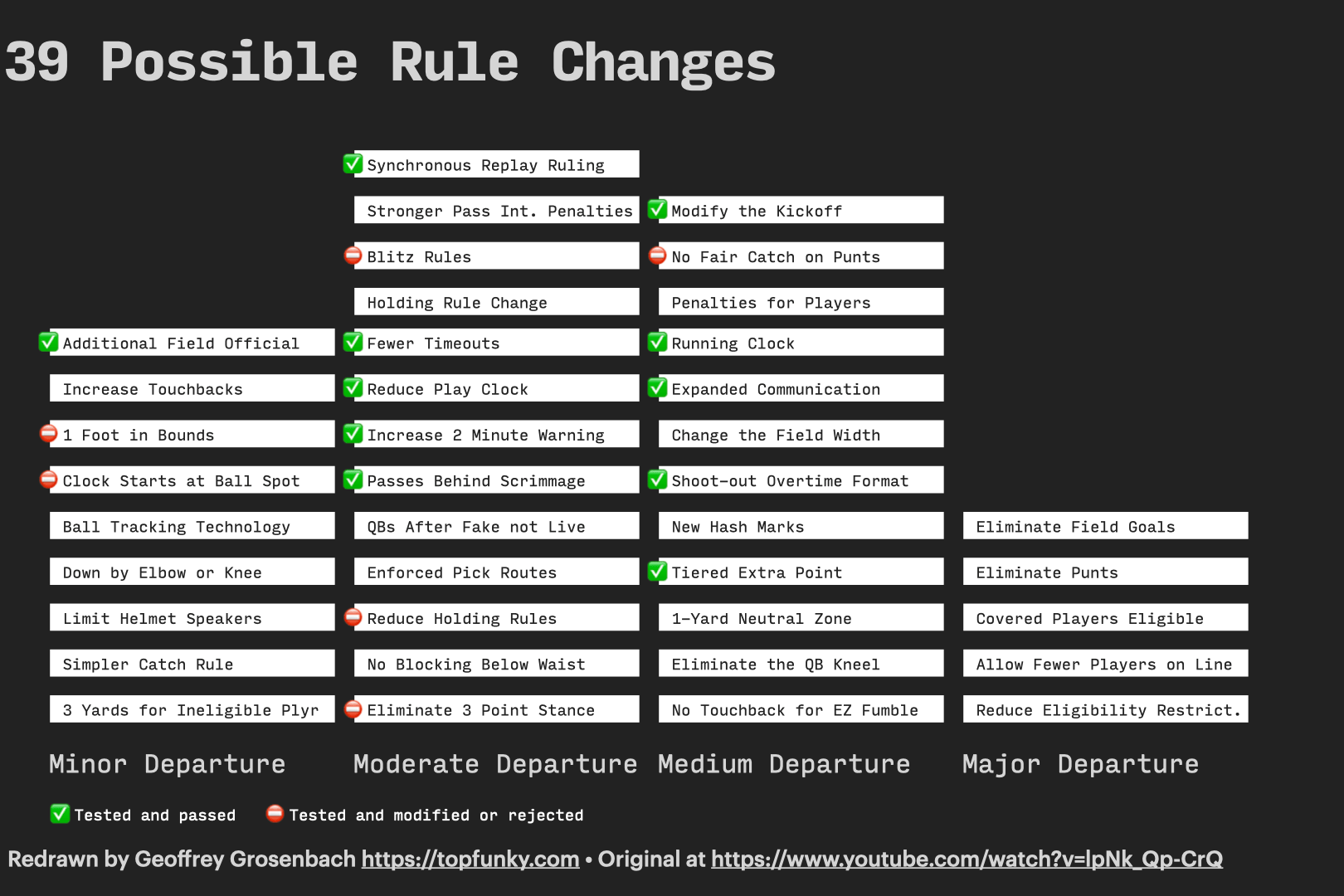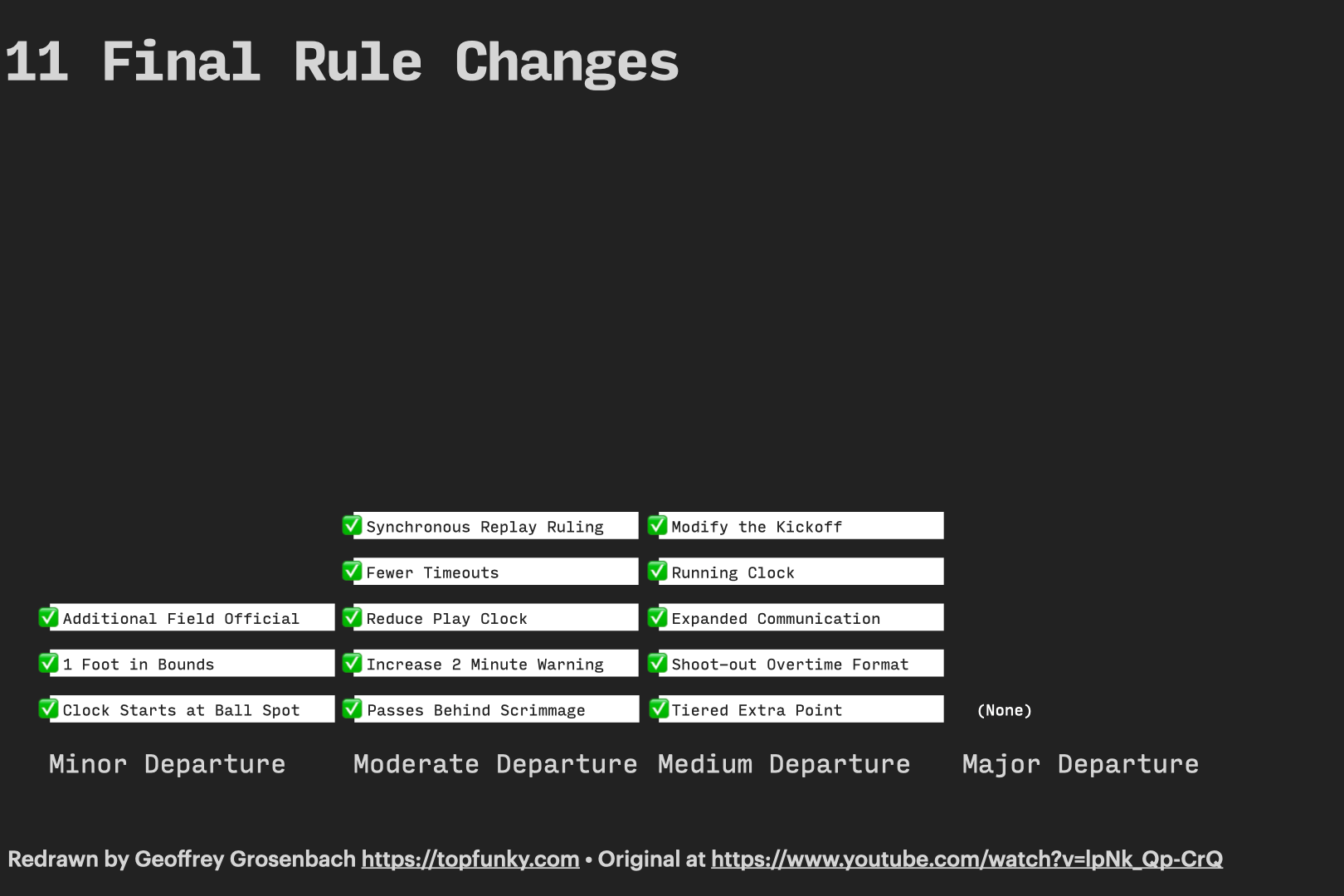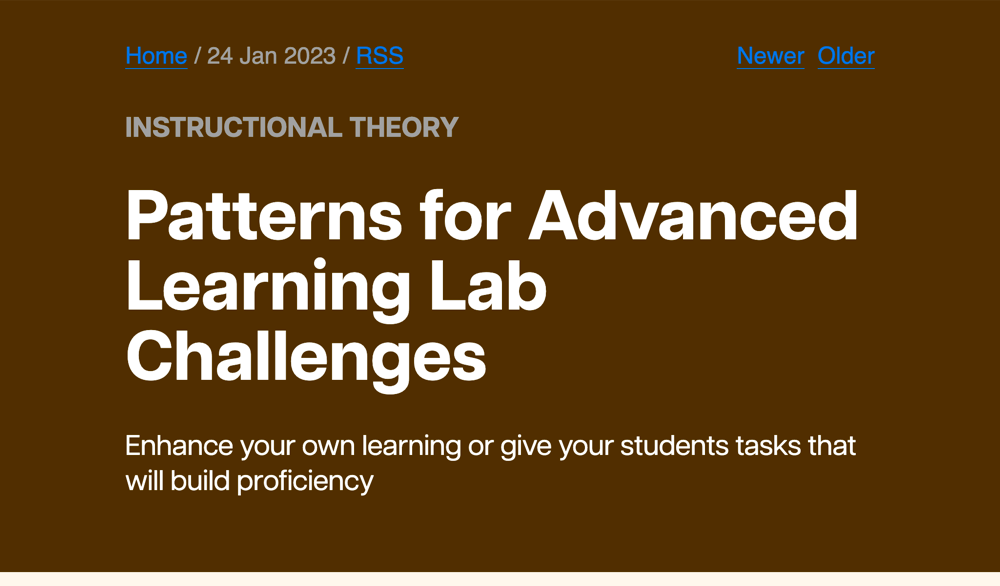📺 Watch on YouTube: Reimagining Football
The best product development ideas are universal; they can be applied to software, sports, or any other endeavor. In this video, former XFL Director of Football Operations, Innovation and Strategy Sam Schwartzstein1 presents his product development workflow.
Some people listen to songs over and over. I’ve watched this presentation a dozen times and will likely watch a dozen more. Staff on my team have watched to learn about real-world product development and minds have been blown. I’ve geeked out about this video over beers with the Director of Sports Analytics for the Houston Rockets.
The video has a mere 500 views at the time of writing but I’ve learned more by watching it than I have from much longer product development courses. Here are the notes I took while watching the video.
Notes
NOTE: The MIT Sloan Sports Analytics conference has a poor record on diversity and opportunities for students but the content and speakers are often high quality.
Start by learning from previous fatal errors: In 2001 they had incorrectly assumed what fans wanted (heavy hits, extreme football),they had too little time to develop the product (9 months).
Ask why? What problem are we solving for?
Create a product for the 38 million dedicated fans who want more football after the NFL season ends.
Create numbers that define success: safe, fast moving, every play matters, fans have fun.
The universal product development process: Research, develop, test, validate, publish.
Ask fans for problems, not solutions. Don’t ask “what would you improve?” They will suggest things that are already being done and have little impact such as “Put a tracking chip in the ball, and eliminate physical chains to measure close first downs.” The ball already has a chip in it and the chains come out less than once a game.
Distill the information to actionable pillars: minimize idle time, reduce meaningless plays, create a more dynamic and rhythmic game, no gimmicks, safer (or at least not any more dangerous).
Establish core principles: invisible efficiency (fans shouldn’t need to explicitly learn new rules even if the rules are different), execution viability, incentives vs hard rules (avoid 2nd order effects that detract from the problems being solved).
Develop a plan with experts, use data to evaluate, test a prototype (on the field).
The rule change slides he shows are enlightening in multiple ways. He shows how he sorts potential features by how they measure up to the overall success criteria. In this case, “invisible efficiency” (can fans easily enjoy new rules that improve the game without needing to be educated about the nuances). He eventually groups the proposed rules by minor, moderate, medium, and major departure from the standard NFL rulebook that fans are most familiar with.
One rarely gets to see a PM’s process for sorting priorities. I see at least three rounds of ranking here. One is a test against the “invisible efficiency” goal. The next is selecting which features should be tested on the field. The third is whether or not a feature could be improved against failures during the testing process. He shows a list of the 11 final rule changes which either passed the prototype or failed and could be modified to be used anyway.

Feature priority list before

Feature priority list after
Analyze data about how the NFL play clock was used: how long from play to snap, how long it takes to call a play, how long it takes to get to the line of scrimmage. This saves months of prototyping by providing a baseline against which reasonable rule changes could be made (shortening the time between plays in order to create a faster paced game).
During testing and validation, try to identify unintended consequences. Some rules that were designed to speed up the last 2 minutes of each half ended up robbing coaches of an opportunity to catch up (tie the game and make it more exciting). So those rules needed to be changed in order to make the game more competitive.
They ran a single test of the rules with real teams, then two tests with the same team over different days to expose repeat dynamics. While they couldn’t prototype an entire season, they can at least play two games.
During the real world game, they learned that offensive linemen (the heaviest players on the field) couldn’t run down the field in time if the play resulted in a gain of over 30 yards. It resulted in 10 delays of game.
The rules about time between plays needed to be modified for real world constraints.
They also changed the top level goals based on the on-field test: instead of creating more entertaining punts, make fewer punts that keep the game moving more quickly and increase the % of action.
Understand the motivations of the players who play the game.
Every one of our players wants to be in the NFL, not the XFL. If we eliminate the huddle and provide live audio communications to all players, wide receivers run
1.5miles less. So you’re getting less wear and tear on your body.
(And they can potentially go on to play in the NFL instead of dealing with injuries from trying to get there). You can’t just design a game in the abstract; you have to sell the new rules to the players so they will participate.
The founder told me, “It’s not your league, it’s not my league, it’s the fans’ league.” They don’t see your research, they don’t see the data. They only see the product on the field.
And by week three, fans were all bought in. We sold out of beer at every one of our games.
Q&A: Kickers were the most skilled players but wouldn’t create the experience they wanted, so rules were created to minimize the ability of kickers to own the game.
📺 Watch on YouTube: Reimagining Football

